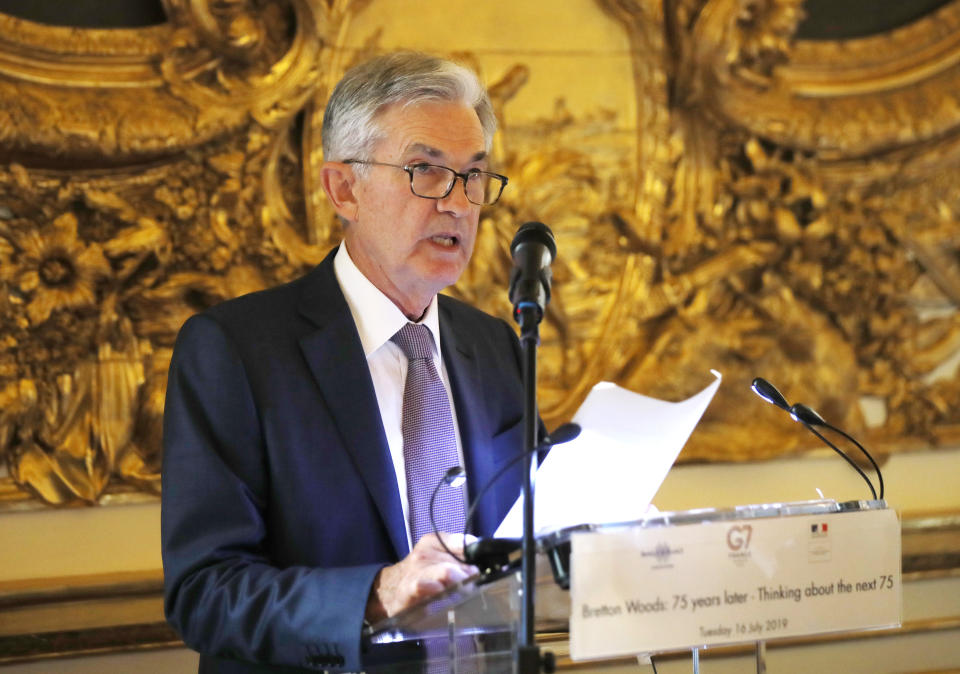Three reasons the Fed should aggressively cut rates in two weeks
The next Federal Reserve meeting is almost upon us.
On September 18, the U.S. central bank will announce its latest policy decision, with markets expecting at least a 0.25% reduction in the Fed’s benchmark interest rate. This would match the rate cut announced by the Fed on July 31, its first since 2008.
But economists at Renaissance Macro on Wednesday outlined the simple, three-part case for why the Fed should be more aggressive this month and cut interest rates by 0.50%.
“At Jackson Hole, [Fed chair Jay] Powell noted three factors weighing on the outlook: global growth, trade policy uncertainty, and muted inflation,” the firm tweeted on Wednesday.
“All of these factors have moved in an unfavorable direction.”

Wednesday’s tweetstorm expands on a research note published by Renaissance’s head of economics Neil Dutta on Tuesday that detailed how each of these factors gives Powell cover for an aggressive — and surprising — cut in two weeks.
“In August, just 39% of global manufacturing PMIs [were] in expansion territory,” Dutta wrote. “While this mark is better than July, it represents the third consecutive month of net PMI contraction.”
On Tuesday, the Institute for Supply Management’s reading on U.S. manufacturing activity in August indicated contracting activity for the first time in three years. And while Yahoo Finance’s Sam Ro notes that this reading doesn’t indicate an imminent recession — as manufacturing accounts for just 12% of GDP, 15% of capex, and less than 9% of payrolls — this data does contribute to the case for Powell to surprise markets.
Dutta also noted Tuesday that continued uncertainty around U.S.-China trade policy — for instance, reports over the weekend indicated the two sides can’t even find a time to meet — is weighing on the outlook. Consumer sentiment data released last week showed “the erosion of consumer confidence due to tariff policies is now well underway,” while companies including Best Buy (BBY) and Foot Locker (FL) have pointed to the trade war as a negative for consumers during their most recent earnings calls.
And while former New York Fed president Bill Dudley was perhaps inelegant in outlining how the Fed ought to deal with the U.S.-China trade war in setting policy, his point that the Fed should, “be more explicit that the greatest risk to the economy was the uncertainty created by the U.S. trade war with China” is becoming a consensus view.
The third pillar of Dutta’s case for a 50 basis point cut in two weeks is the only part that is explicitly in the Fed’s dual mandate — inflation. As of July, core PCE — the Fed’s preferred inflation measure — stood at 1.6%, well below the Fed’s 2% target, and Dutta notes that the strength of the dollar will continue to weigh on inflation expectations. This, in his view, likely puts the Fed’s 2020 outlook for 1.9% core PCE in doubt.
Rates markets are currently pricing in a roughly 20% chance of a 50 basis point cut from the Fed on September 18. Ahead of prior Fed rate increases or cuts during this cycle, markets have almost fully-priced in the move beforehand.
This indicates that Powell still maintains an element of surprise, potentially making a 50 basis point cut in two weeks more potent than it would otherwise be if the market were to price in this move ahead of the meeting.
Last week on The Final Round, Jim Bianco told Yahoo Finance that the bond market is signaling the Fed it needs to be more aggressive in cutting rates. In August, Bianco argued for a 50 basis point cut ahead of Powell’s Jackson Hole speech.
And on Tuesday evening, St. Louis Fed president Jim Bullard also outlined his case for cutting rates by 50 basis points in September. Just part of what is now a growing chorus of voices calling for a more aggressive Jay Powell this month.
“The Fed has tools it can use and should demonstrate a willingness to use them,” Renaissance Macro said Wednesday.
“We think the Fed should and will go 50bps in September.”
—
Myles Udland is a reporter and anchor at Yahoo Finance. Follow him on Twitter @MylesUdland
Read the latest financial and business news from Yahoo Finance
Follow Yahoo Finance on Twitter, Facebook, Instagram, Flipboard, SmartNews, LinkedIn, YouTube, and reddit.

 Yahoo Finance
Yahoo Finance 


